Buying a dishwashing machine is only part of the task; you still need to install it correctly and bring all the necessary communications to it. Perhaps, in every city there are many services offering the service of connecting a dishwasher. But in fact, this is not so complicated a process as to turn to professionals. You can connect on your own even with minimal knowledge about electrics, sewers and water supply.
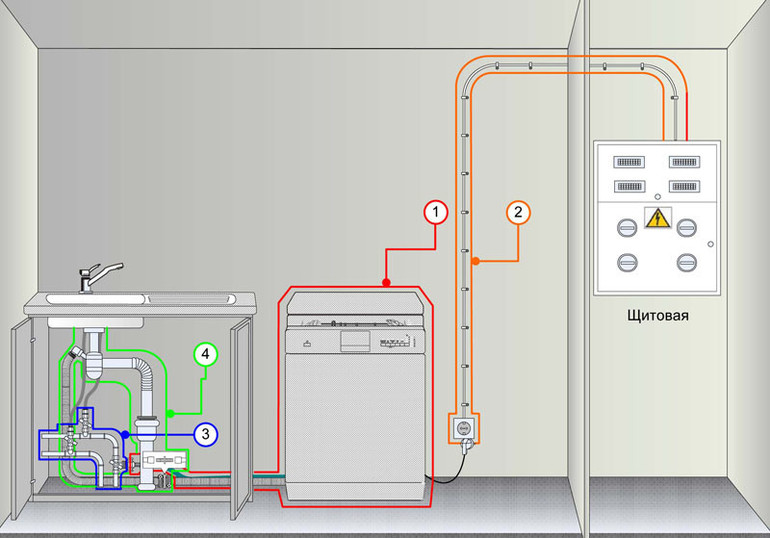
Machine installation
Before proceeding directly to connecting the dishwasher, it is necessary to properly prepare its location. freestanding structures are much easier to install than recessed ones. The thing is that when you open the machine after the washing cycle is completed, steam escapes from it, so the countertop on the back must be pre-glued with foil tape. In addition, there are a number of recommendations for installing a dishwasher:
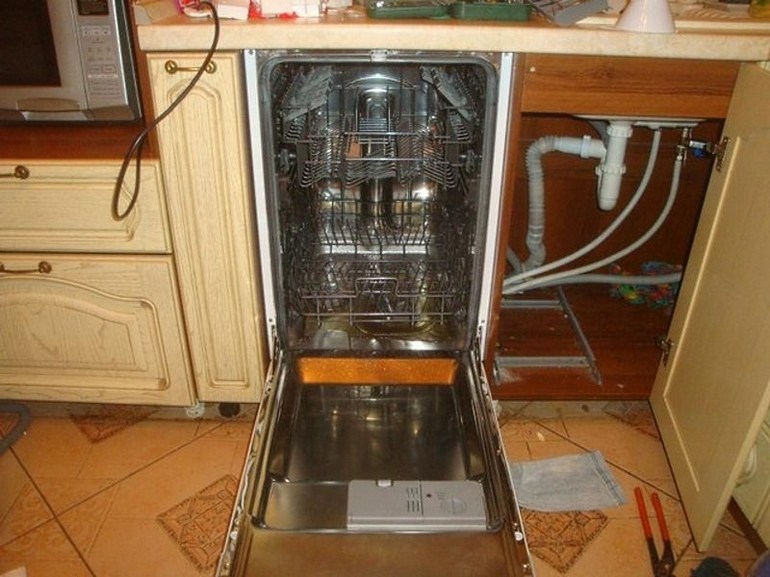
- the integrated product must be installed in the niche of the kitchen unit with a small gap in relation to the side walls;
- the distance from the machine to the sewer pipe should not exceed one and a half meters;
- There is no direct ban on the location of the dishwasher under the gas stove, but it must be installed through a special gasket that provides protection from moisture and high temperature;
- the floor should be even, skew no more than three degrees;
- the outlet and water supply must be at a distance not exceeding the length of the factory power cord and hose;
- if a mortise dishwasher is installed, then the necessary holes in the walls of the headset are made in advance.
After installation at the place provided for it, the machine is connected to a sewer drain, water supply and electrical network.
Drain connection

Essence connecting the dishwasher to the sewer consists in the correct location of the machine’s built-in drain hose and its reliable connection to the water drainage system. Incorrect installation can not only lead to the formation of unpleasant odors in the kitchen, but also to leaks.
It is not recommended to increase the length of the hose under any circumstances. If the factory hose is not enough, then it is necessary to lengthen it, not it, but the sewer channel. Drain if necessary is best increased using plastic pipes. To do this, you may need an adapter for cast iron, a tee, an elbow, a pipe with a bell.
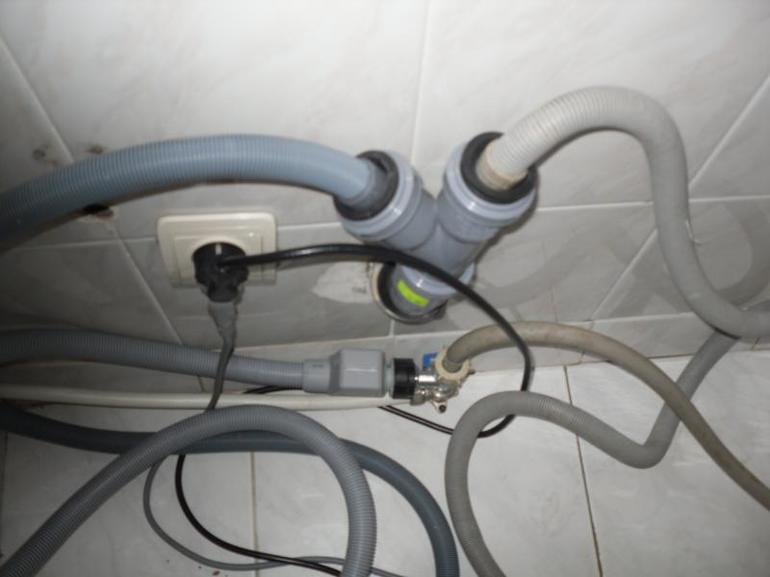
The assembly of the pipeline does not require special skills and is quite easy by inserting the necessary parts into each other using sealing gum. If there is a sink near the machine, then you can connect the drain to a siphon. To do this, you need to replace it with a two-pin.
But also do not forget that the drain hose should be raised 60 cm, and after that it should lower to the connection point with a drain. That is, it is bent in the form of an inverted horseshoe. This is necessary to avoid the ingress of water and odors from the sewer into the machine.
Water supply

Most dishwashers are designed to work with piping in which the pressure does not exceed 1 kPa. Therefore, if it is more than the permissible value, then without fail, before the hose from the water supply side, it will be necessary to connect the gearbox.
The hose from the machine can be connected both to a specially withdrawn pipe and to a tee installed in the water supply system to the sink. To do this, the flexible hose through which water is supplied to the mixer is unscrewed, and a tee is screwed in its place.To carry out the work, you will need an adjustable wrench and an FUM tape, ensuring the tightness of the connection.
The connection itself is performed as follows:
- a shut-off valve is installed on the water outlet;
- a coarse filter is connected to the tap to prevent sand and rust from entering the machine;
- wrap the tape on the filter thread in six to seven layers and wind the factory hose that comes with the machine;
- the return end of the hose is screwed to the inlet in the dishwasher.
To protect the system against leakage, it is recommended that a safety valve be connected to the dishwasher. Aquastop. If a leak occurs, the pressure in the system drops and the valve automatically shuts off the water supply. It is located between the water supply tap and the inlet hose.
Electrical connection
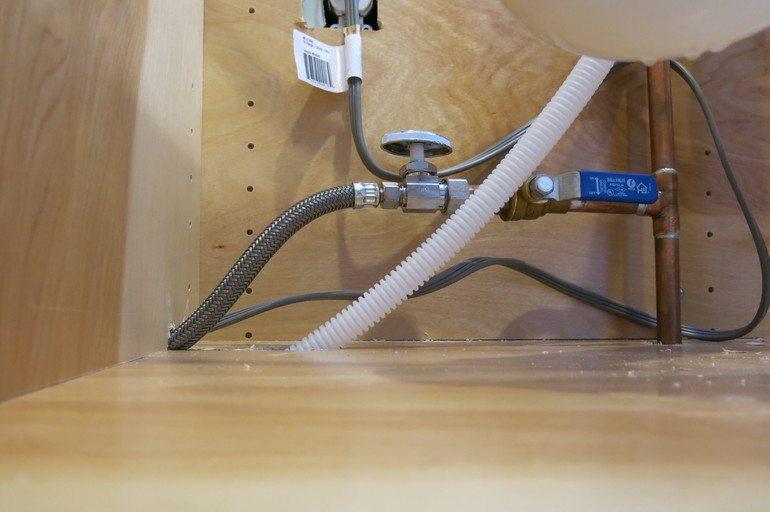
As a rule, the dishwasher is connected to a separate outlet; extension cords are not allowed. Therefore, if it is not nearby, then you have to pull a separate line. The outlet is installed at a distance of 10-60 cm from the floor and at least 50 cm from the gas stove. For switching use a copper wire with a cross section of 2.5 m².
A separate circuit breaker must be provided in the wiring diagram. It is installed in the shield. Its value is chosen on the order of 10 A. If the house does not provide grounding, then instead of the machine it makes sense to install a differential device. This is the same machine, but only with built-in RCD. The wiring can be laid both in the gate and hidden under the baseboards or held on the wall.
Thus, connecting a dishwasher with your own hands is not so difficult. The main thing is to do everything carefully and comply with safety rules. This is especially true for work with electricity.

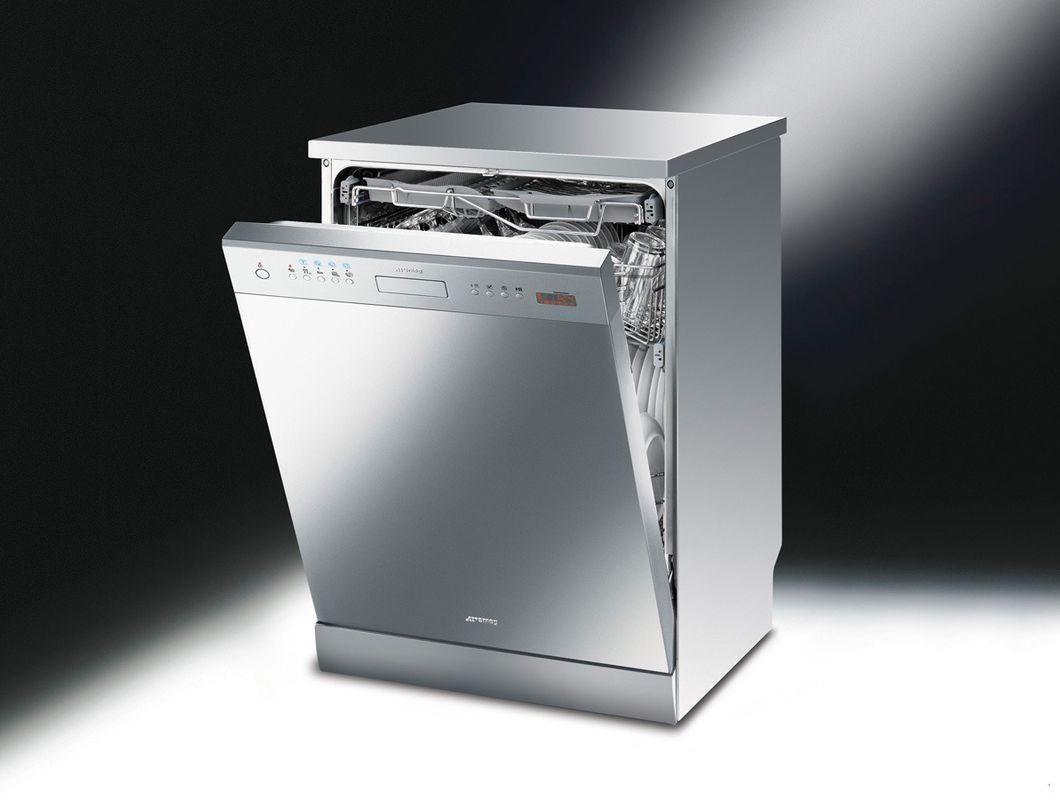



Alas, no comments yet. Be the first!